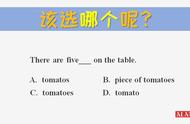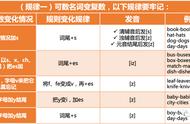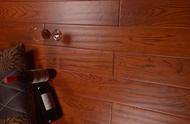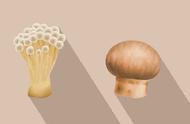Hey guys, it's Hadar and this is the Accents Way.
大家好,我是哈达尔,这里是 the Accents Way。
Today, I'm going to answer a question that I get asked a lot: how to pronounce the S suffix, the S that we add to words, okay?
今天,我要回答一个我经常被问到的问题:如何发后缀音“S”,也就是我们加到单词后的“S”?
I said an S, is that a Z, is it something completely different that we don't know about?
我说的“S”,但会是“Z”音吗,或者是我们不知道的发音?
So, let's clarify this whole thing.
那么,让我们把整个事情说清楚。
Now, we use the S suffix in three different cases.
现在,我们在三种不同的情况下使用“S”后缀。
One, when we use the plural form, a boy, boys, a car, cars, a cat, cats, okay?
第一,当我们使用复数形式时,比如 a boy,boys,a car,cars,a cat,cats,明白吗?
The second option is when we want to indicate possession.
第二,是我们想表示占有。
All right, so when you add the apostrophe "s", right?
这时你会加上 's,对吧?
And then you say, the boy's shirt, the girl's house, The cat's tail.
然后你说,男孩的衬衫,女孩的房子,猫的尾巴。
And then we also add the S suffix to verbs when we use the present simple tense.
然后,当我们使用一般现在时,我们也会在动词后面加上“S”后缀。
So for example, walks, hears, plays.
例如,walks、hears、plays。
And we do this when the subject is either he, she, or it, third-person singular.
当主语是“he”、“she”或“it”,或者第三人称单数时,我们会这样做。
You want to think about it as if it's a singular person that is not you or me, okay?
你要把它想象成一个不属于你或我的个体。
It's not someone in this room.
不是这个房间里的某个人。
So he, she, or it, when we talk about he, she, or it, we usually add an S to the verb when we use the present simple tense.
当我们谈论h“he”、“she”或“it”以及我们使用一般现在时,我们通常会在动词后面加一个“S”。
So now, let's understand how to pronounce those S's because, listen to how I say it.
现在,让我们来了解一下这些“S”的发音,因为,听我是怎么说的。
When I say cat, cats, that's an S. Sleeps, she sleeps in late on the weekends.
当我说“cat”的复数“cats”时,那是一个“s”音。/sliːps/,她周末睡懒觉。
Sleeps, that's an S. Things, that's a Z. And then when we want to add the plural form to the word bus, buses.
/sliːps/,是一个“s”音。/θɪŋz/,是一个“z”音。然后当我们想给“bus”加上复数形式,buses。
We add es, so we added a vowel now.
我们加了/es/,所以我们现在加了一个元音。
So yes, there are three options to pronounce this s.
没错,“S”有三种发音。
S, Z, IZ.
分别是/s/、/z/、/iz/。
First of all, let's talk about what's the difference between an S and a Z. So, to create the S and Z sounds, the tongue goes up, and almost touches the upper palate and the air passes between the tongue and the upper palate.
首先,我们来谈谈/s/和/z/的区别。要发出/s/音和/z/音,舌头需要向上伸,几乎碰到上颚,空气从舌头和上颚之间穿过。
S, creating this really tense friction sound.
/s/,产生了非常紧张的摩擦声。
Now, if you place your hands here, S, and then you try Z, so you want a few vibrations here because the vocal cords are vibrating for the Z sound.
如果你把你的手放在这里,/s/,然后你试/z/音,你会发现这里有一些振动因为声带在为/z/音而振动。
If you don't feel vibrations, then you're probably still pronouncing an S sound.
如果你感觉不到震动,那么你可能还在发/s/音。
So let's practice it together.
让我们一起来练习。
S, Z. You want to feel a difference here and to hear the sound changes.
/s/,/z/。你要感受这里的不同,并听到声音的变化。
S, Z. Now here's the thing.
/s/,/z/。事情是这样的。
First, I'm gonna give you the official rule, but if you stick with me, I'll give you Hadar's rule which will make everything a lot easier and much more intuitive.
首先,我要给你一个正式的规则,但如果你坚持听我的,我会给你哈达尔规则,它会让一切变得更简单、更直观。
So, the official rule says that when the S suffix appears after a voiced consonant or after a vowel, it's pronounced as a Z. A voiced consonant is a consonant that is produced when the vocal cords are vibrating.
官方规则说,当“S”后缀出现在一个浊辅音或元音之后,它会被读成/z/。浊辅音是在声带振动时发出的辅音。
So, some consonants are voiceless, for example,/s/、/p/、/k/、/ʃ/、/θ/.
所以,有些辅音是不发音的,比如/s/,/ p/,/ k/,/ʃ/,/ θ/。
Right, but it's just air coming out.
只有空气出来。
And other consonants are voiced,/v/、/ʒ/、/dʒ/、/m/.
其他辅音为浊音,/v/、/ʒ/、/dʒ/、/m/。
Right, these are all voiced consonants.
这些都是浊辅音。
The vocal cords are vibrating just as the S is voiceless and the Z is voiced.
声带在振动,就像/s/是不发声的,/z/是发声的。
So when a word ends with a voiced consonant, for example, bag, and then we add the S suffix, it's bags.
所以,当一个单词以浊辅音结尾时,例如“bag”,我们加上“S”后缀,它就变成了“bags”。
Thing and with an/ng/, that's a voiced consonant, things.
Thing 的结尾是/ng/,这是一个浊辅音,/θɪŋz/。
Play ends with a vowel, plays.
Play 以元音结尾,/pleɪz/。
C, Cs.
C,/'siz/。
Bag, bags, right?
Bag,/bæɡz/。
It ends with the Z. When the word ends with a voiceless consonant, then we add an S. Sleep, sleeps.
尾音都是/z/。当单词以清音辅音结尾时,我们的发音是/s/。Sleep,/sliːps/。
Walk, walks.
Walk,/wɔːks/。
Back, backs.
Back,/bæks/。
Bet, bets, right?
Bet,/bets/,对吧?
It's an S sound.
都是/s/音。
Now look, I am not expecting you to start analyzing your consonants whether they're voiced or voiceless in the middle of a conversation.
我不指望你们在对话中开始分析辅音,不管它们是发音的还是清音的。
Hey, did you bring that — Sweet tears, a voiceless consonant.
嘿,你带来了——Sweet tears,/teə(r)/是清辅音吗?
So this is why I came up with this really cool and simple rule.
这就是为什么我想出了这个很酷很简单的规则。
So here it goes.
我们开始吧!
Always try to make a Z sound, okay?
尽量发“Z”音,好吗?
Always go for Z. If we have words with consonants at the end, and then we need to add an S or a Z, you're not sure which is which, just add a Z sound.
结尾总是/z/。如果我们有结尾有辅音的单词,然后我们需要发/s/或者/z/,你不确定哪个是哪个,就发/z/音。
If it's not supposed to be a Z, it's going to come out as an S, anyway.
如果它不应该是/z/音,那么它应该是/s/音。
So here's the thing, English doesn't like it when there are two consonants one after the other when one is voiceless and the other one is voiced.
事情是这样的,英语不喜欢有两个辅音连在一起,一个是清音,一个是浊音。
So to say something like sleepZ is almost impossible especially when it's at the end of the word.
所以说像“sleepZ”这样的单词几乎是不可能的,尤其是当它位于单词结尾的时候
So in this case, when I try to add a Z, it changes the route, so all of a sudden, it's going to sound like sleebS, the P is gonna sound like a B. Because one sound effects the other.
在这种情况下,当我尝试添加一个/z/音,我就会改变整个单词的发音,所以突然间,它听起来像“sleebS”,“P”音变成了“B”音。因为一个声音会影响另一个。
So English wants it to be two consonant with the same voicing quality.
所以英语希望它是两个具有相同音质的辅音。
Either two voiceless consonants or two voiced consonants.
两个清音或两个浊辅音。
So if I add a Z sound, it'll turn the previous consonant to a voiced consonant.
所以如果我加一个/z/音,它会把前面的辅音变成一个浊音。
Sleep, sleeps.
Sleep,/sliːps/。
Walk, walks, right?
Walk,/wɔːks/,对吧?
If I add a Z sound, if I insist on the Z sound, it will change the route of the word and that's not good.
如果我添加一个/z/音,如果我坚持使用/z/音,它会改变这个单词的发音路线,这是不好的。
We don't want to change the route, the suffix is less important, so what the mouth does and the brain does is just change the voicing quality of the S suffix.
我们不想整个单词的发音,后缀不太重要,所以嘴巴和大脑所做的只是改变“S”后缀的发音。
So instead of making it a Z sound, it's going to sound like an S. Sleep, sleeps.
所以它不是发/z/音,而是发/s/音。Sleep,/sliːps/。
And then it's very simple to pronounce.
这样,它的发音很简单了。
Walk, walks.
它的发音很简单。
Hate, hates.
Hate,/heɪts/。
Lack, lacks.
Lack,/læks/。
Now, sometimes it's impossible to pronounce an S or Z, and that happens when the word ends with either S sound, Z sound,/sh/, or/zh/.
有时候/s/或/z/是不可能发出的,当单词以/s/、/z/、/sh/或/zh/结尾时就会发生这种情况。
So when the S suffix is pronounced right after a consonant that is very close to where the S or the Z is located, for example, let's take the word couch.
所以,当“S”后缀在一个非常接近/s/或/z/所在位置的辅音之后发音时,我们就拿单词“couch”来举例。
And if I try to add a Z to it, couchZ, it's impossible.
如果我们加上/z/音变成“couchZ”,这显然是不可能的。
I need to indicate that there is another suffix there, another sound there, and to do that, I should add a vowel.
我需要指出还有另一个后缀,为了做到这一点,我应该加一个元音。
Couch, couches.
Couch,/kaʊtʃiz/。
Bus, buses.
Bus,/ˈbʌsɪz/。
Boss, bosses.
Boss,/bɒsiz/。
So we actually add an E sound and a Z, is, okay?
所以我们实际上加了一个“E”音和一个“Z”音,对吧?
So when the S appears right after a/sh/、/zh/、/Z/、/ch/, these very similar consonants, then we add a vowel in between.
所以当“S”出现在/sh/、/zh/、/Z/、/ch/之后,这些非常相似的辅音,然后我们在中间加一个元音。
Now again, you don't need to memorize it, you'll see that it's impossible for you to add this S or Z suffix after these consonant, right?
再说一次,你不需要记住它,你会发现你不可能在这些辅音后面加上/s/音或/z/音后缀,对吧?
Pass, passS?
“Pass”可以变成“passS”吗?
Impossible, it doesn't sound like I added anything, right?
不可能,听起来我什么都没加,对吧?
And this is why we need to add the vowel, passes, couches, garages, and bosses.
就是为什么我们需要添加元音,/ˈpɑːsɪz/、/kaʊtʃiz/、/ɡærɑːʒiz/和/bɒsiz/。
So, let's turn all this nice knowledge into action and write in the comments below three words.
所以,让我们把这些美好的知识转化为行动,在评论下面写下三个词。
Three words, one when the S suffix is pronounced as an S, two, when it's pronounced as a Z, and three, when it's pronounced as es as in buses, okay?
一个是当“S”后缀读成/s/的时候,第二个是当它读成/z/的时候,第三个是当它读成/es/的时候,明白了吗?
And if you're feeling really creative, then actually create a sentence for each of these words.
如果你觉得很有创造力,那就为每一个词造一个句子。
What do you think?
你觉得如何?
Let's see what you got.
让我们看看你学到了什么。
Thank you so much for watching!
感谢收看!
Please share this video with your friends if you liked it, I feel like it was just spitting all over the space here, thank God, no one's here.
如果你喜欢这个视频,请分享给你的朋友,我感觉我就像在这里吐了一地,感谢上帝,没有人在这里。
And it's just me.
这里就只有你和我。
Have a wonderful week, don't forget to subscribe and I'll see you next week in the next video.
祝你本周愉快,不要忘记订阅我们的频道,我们下周再见。
Bye~ So since I'm not expecting you to analyze, so let's turn all this nice knowledge into action.
拜拜~我不要求你们去分析,那么让我们把这些好的知识转化为行动。
So click the link below to download the practice sheet and audio I've prepared for you with the different pronunciations of the S suffix.
所以点击下面的链接,下载我为你准备的关于“S”后缀不同发音的练习表和音频。
So, it's really worth it.
所以,这是非常值得的。
























